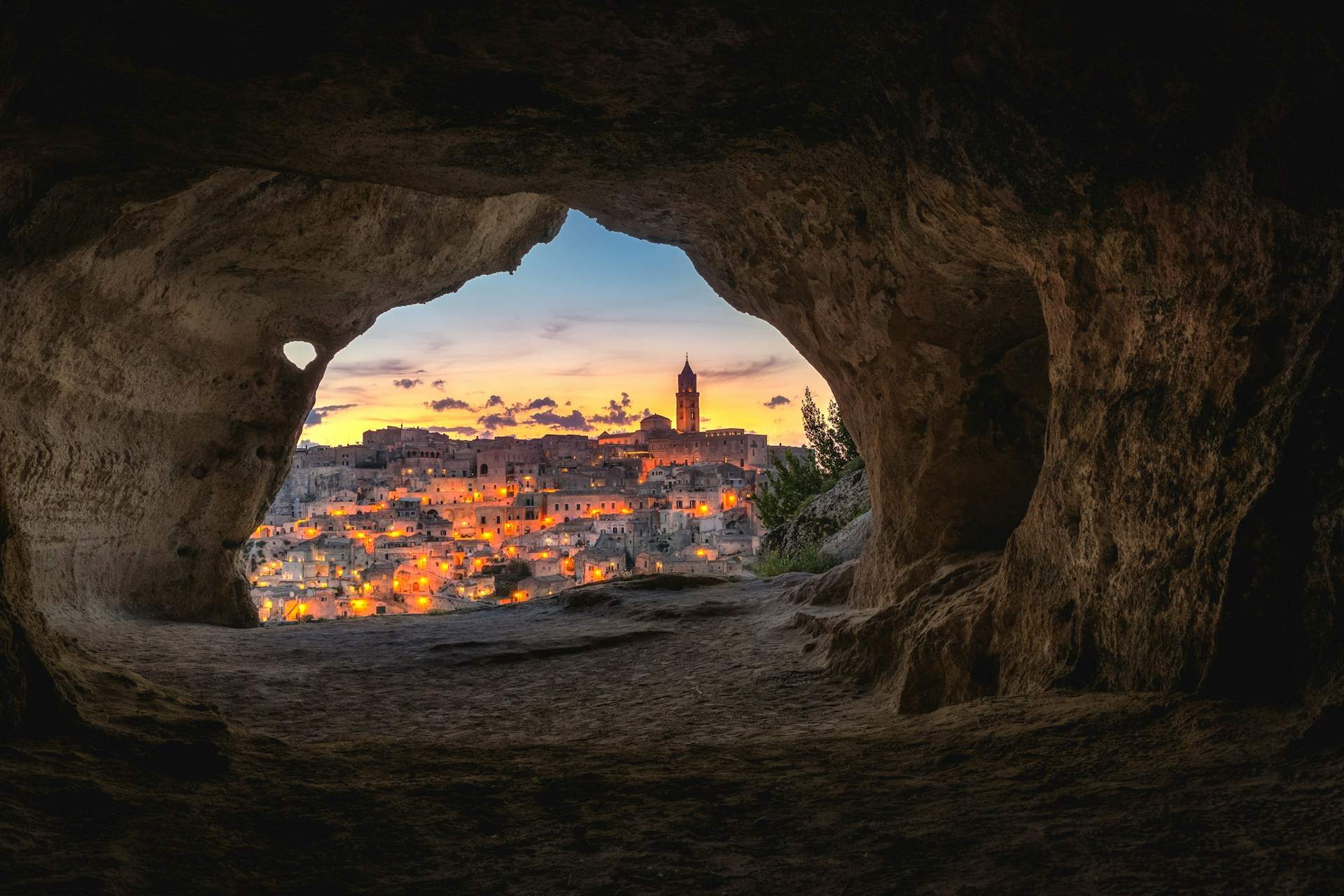Matera, a UNESCO World Heritage site nestled in southern Italy’s Basilicata region, is home to the Sassi, ancient cave dwellings that date back to the Paleolithic era. These stone-carved homes, once considered symbols of extreme poverty, have undergone a remarkable transformation, becoming a symbol of sustainable luxury and forward-thinking design. Once known as “la città della vergogna” (the city of shame) due to its dire living conditions in the mid-20th century, Matera now stands as a beacon of innovative restoration and architectural preservation.
The Sassi’s history is steeped in hardship, with families of up to 20 people living in cramped, damp spaces, often without plumbing or electricity. However, after Italy’s Prime Minister visited in the 1950s and declared the conditions a national disgrace, the government initiated the evacuation of the caves, leaving the area in a state of decline. It wasn’t until Matera’s listing as a UNESCO World Heritage site in 1993, followed by its status as the European Capital of Culture in 2019, that the city began its revival.
Today, the Sassi has evolved into an extraordinary example of adaptive reuse in architecture. Restoration efforts focus on maintaining the caves’ historical integrity while infusing modern design elements. The cave homes, carved directly into limestone cliffs, offer natural insulation – cool in summer and warm in winter – making them inherently energy-efficient. Modern restorations often utilize breathable materials such as lime-based mortar and ventilation systems, which help prevent humidity build-up and ensure a healthy living environment.
The interiors of these homes blend the old with the new. For example, in properties like Casa di Mimì, modern bespoke furniture contrasts with ancient stone walls, and a cistern uncovered during renovations is preserved beneath a glass floor, offering a glimpse into the city’s past. In other homes, large glass panels and shelves replace interior walls, maximizing natural light and creating airy, open spaces.
Matera’s real estate market now offers a range of properties, from modestly priced renovated cave homes to luxurious villas. A 130 m² home in the historic center is priced at €210,000, while more expansive properties like a 262 m² medieval castle tower are listed at €850,000. Despite the potential for significant returns, renovating a sasso can be costly and time-consuming, with some projects taking more than twice as long as conventional builds due to the manual transport of materials.
The city’s revival reflects a broader trend of embracing heritage in modern architecture, where ancient structures are restored and transformed into luxurious living spaces. Matera’s cave homes offer a unique living experience that combines the best of sustainability, history, and contemporary design. As more investors and homeowners are drawn to these distinctive properties, Matera is solidifying its place as a hub for luxury real estate that honors the past while embracing the future.


